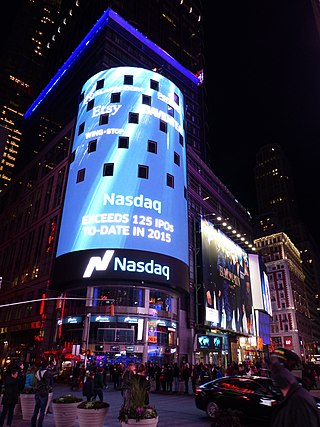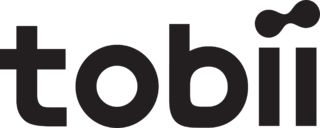
Assistive technology (AT) is a term for assistive, adaptive, and rehabilitative devices for people with disabilities and the elderly. Disabled people often have difficulty performing activities of daily living (ADLs) independently, or even with assistance. ADLs are self-care activities that include toileting, mobility (ambulation), eating, bathing, dressing, grooming, and personal device care. Assistive technology can ameliorate the effects of disabilities that limit the ability to perform ADLs. Assistive technology promotes greater independence by enabling people to perform tasks they were formerly unable to accomplish, or had great difficulty accomplishing, by providing enhancements to, or changing methods of interacting with, the technology needed to accomplish such tasks. For example, wheelchairs provide independent mobility for those who cannot walk, while assistive eating devices can enable people who cannot feed themselves to do so. Due to assistive technology, disabled people have an opportunity of a more positive and easygoing lifestyle, with an increase in "social participation," "security and control," and a greater chance to "reduce institutional costs without significantly increasing household expenses." In schools, assistive technology can be critical in allowing students with disabilities access the general education curriculum. Students who experience challenges writing or keyboarding, for example, can use voice recognition software instead. Assistive technologies assist people who are recovering from strokes and people who have abstained injuries that effect their daily tasks.
Computer accessibility refers to the accessibility of a computer system to all people, regardless of disability type or severity of impairment. The term accessibility is most often used in reference to specialized hardware or software, or a combination of both, designed to enable the use of a computer by a person with a disability or impairment. Computer accessibility often has direct positive effects on people with disabilities.

The Nasdaq-100 (^NDX) is a stock market index made up of 101 equity securities issued by 100 of the largest non-financial companies listed on the Nasdaq stock exchange. It is a modified capitalization-weighted index. The stocks' weights in the index are based on their market capitalizations, with certain rules capping the influence of the largest components. It is limited to companies from a single exchange, and it does not have any financial companies. The financial companies are in a separate index, the NASDAQ Financial-100.

Nasdaq, Inc. is an American multinational financial services corporation that owns and operates three stock exchanges in the United States: the namesake Nasdaq stock exchange, the Philadelphia Stock Exchange, and the Boston Stock Exchange, and seven European stock exchanges: Nasdaq Copenhagen, Nasdaq Helsinki, Nasdaq Iceland, Nasdaq Riga, Nasdaq Stockholm, Nasdaq Tallinn, and Nasdaq Vilnius. It is headquartered in New York City, and its president and chief executive officer is Adena Friedman.

Augmentative and alternative communication (AAC) encompasses the communication methods used to supplement or replace speech or writing for those with impairments in the production or comprehension of spoken or written language. AAC is used by those with a wide range of speech and language impairments, including congenital impairments such as cerebral palsy, intellectual impairment and autism, and acquired conditions such as amyotrophic lateral sclerosis and Parkinson's disease. AAC can be a permanent addition to a person's communication or a temporary aid. Stephen Hawking used AAC to communicate through a speech-generating device.

Comverse Technology, Inc., often referred to as simply Comverse, was a technology company located in Woodbury, New York in the United States, that developed and marketed telecommunications software. The company focused on providing value-added services to telecommunication service providers, in particular to mobile network operators. Comverse Technology had several wholly or partly owned subsidiaries. The name "Comverse" is a fusion of the words "communication" and "versatility".

Openwave is a division of Enea. It provides video traffic management and 5G mobile products.
Maxim Integrated, a subsidiary of Analog Devices, designs, manufactures, and sells analog and mixed-signal integrated circuits for the automotive, industrial, communications, consumer, and computing markets. Maxim's product portfolio includes power and battery management ICs, sensors, analog ICs, interface ICs, communications solutions, digital ICs, embedded security, and microcontrollers. The company is headquartered in San Jose, California, and has design centers, manufacturing facilities, and sales offices worldwide.

Sogou, Inc. is a Chinese technology company that offers a search engine. It is a subsidiary of Tencent.
Verint Systems is a Melville, New York-based analytics company which was founded in 2002. The company sells software and hardware products for customer engagement management and business intelligence. Their products are designed to assist clients in data analysis, specifically large data sets.

Speech-generating devices (SGDs), also known as voice output communication aids, are electronic augmentative and alternative communication (AAC) systems used to supplement or replace speech or writing for individuals with severe speech impairments, enabling them to verbally communicate. SGDs are important for people who have limited means of interacting verbally, as they allow individuals to become active participants in communication interactions. They are particularly helpful for patients with amyotrophic lateral sclerosis (ALS) but recently have been used for children with predicted speech deficiencies.
A revoicer provides communication assistance by carefully listening to the speech patterns uttered by an individual with a speech disability, using lipreading (speechreading) and attention to other cues if necessary for full understanding of the utterances, and then repeats the same words in a manner that is more clear and understandable to the listener. Revoicers generally have excellent skills in auditory phonetic/phonemic pattern recognition, similar to those utilized by a court reporter or stenographer, to identify the sounds of speech of the speaker.

Tobii AB is a Swedish high-technology company that develops and sells products for eye tracking and attention computing.
Genasys Inc. is based in San Diego, California. Its long-range acoustic device (LRAD) products are used for long-range acoustic hailing and mass notification. Its software-as-a-service products - Genasys Emergency Management (GEM) and Zonehaven - are used for emergency alerting, notifications, evacuations and repopulations. The company was previously named American Technology Corporation (ATC) until 2010 and as LRAD Corporation until 2019. The company's stock trades on the NASDAQ Capital Market with the ticker symbol "GNSS".

LSI Logic Corporation, an American company founded in Santa Clara, California, was a pioneer in the ASIC and EDA industries. It evolved over time to design and sell semiconductors and software that accelerated storage and networking in data centers, mobile networks and client computing.

Borqs Technologies Inc. founded in 2007,to designs, develops and deploys Internet of Things products and solutions. In addition to developing the first commercial-grade software to support video telephony for Android, Borqs was selected by Qualcomm in 2016 to partner in developing the world's first 4G Android wearable, which includes smartwatches for children and adults, as well as watches designed for fitness. Borqs marked its debut as a public company on August 18, 2017, changing its name to Borqs Technologies, Inc. Listed on The NASDAQ Stock Market, under the trading symbol, BRQS. Borqs has research and development centers in China and India, and presence in the US, Japan and Korea.
IPC Systems, Inc. is an American company headquartered in Jersey City, New Jersey that provides and services voice communication systems for financial companies. In 2014, IPC Systems employs approximately 1,000 employees throughout the Americas, EMEA and Asia-Pacific regions
Silicon Motion Technology Corporation, stylized as SiliconMotion is an American-Taiwanese company involved in developing NAND flash controller integrated circuits (ICs) for solid-state storage devices. The company said it supplies more NAND flash controllers than any other company, over five billion from 2006 through 2016. They are found in commercial, enterprise, and industrial applications ranging from SSDs, eMMCs, memory cards, and USB flash drives.
Xura, Inc. , previously known as Comverse, Inc., was a technology company headquartered in Wakefield, Massachusetts, United States, in existence from 2013 to 2017, that offered a portfolio of digital services which enabled global communications across a variety of mobile devices and platforms. Xura marketed and sold to communications service providers (CSPs) and to enterprises.
WatchGuard, formally known as WatchGuard Technologies, Inc is a Seattle, Washington-based network security vendor. Its products are designed to protect computer networks from outside threats such as malware and ransomware.










